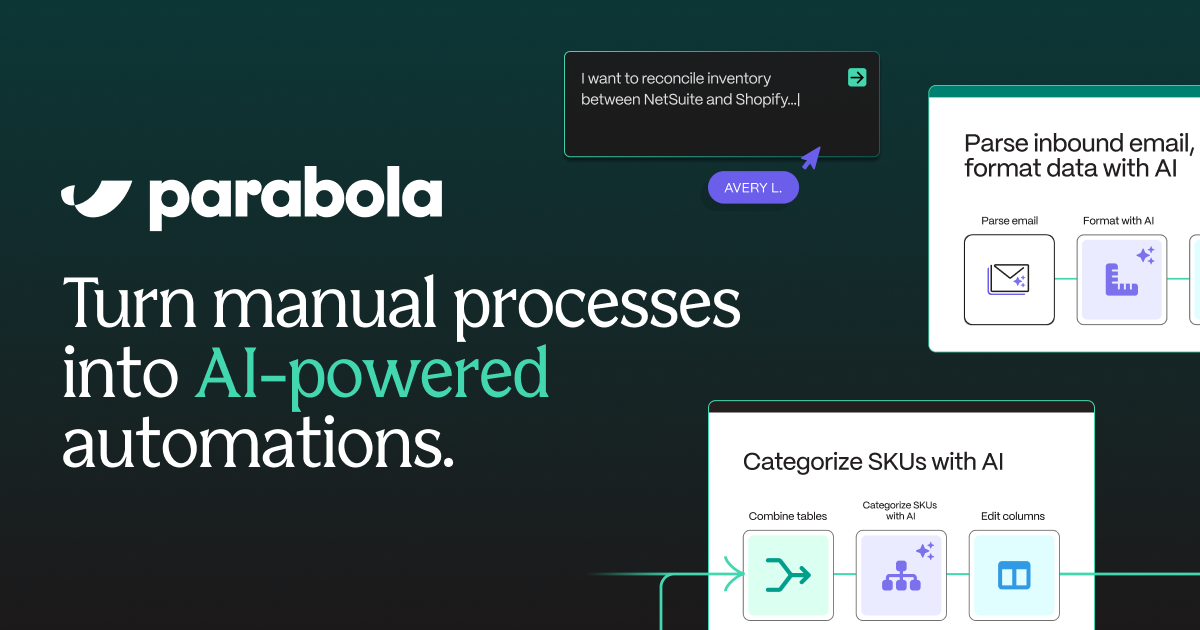Convert a Freight Invoice PDF to a Spreadsheet Using AI – Free Template
Convert data from freight invoice PDFs to spreadsheets without writing a single line of code.

Convert data from freight invoice PDFs to spreadsheets without writing a single line of code.









Getting freight invoice data out of PDFs and into a standardized format is the first step to actually making use of that data. By converting that data to a workable format, you open the door to tons of value-adding benefits for your business.
While there’s no shortage of projects that could follow, you could use this data to do things like:
Just take it from the customs team at a multinational freight forwarder who are working to automate PDF ingestion across their department. This project to digitize all kinds of PDF documents through the end of the year (ISFs, airway bills, commercial invoices, etc.) will save an estimated $1,000,000 in labor. For them, just getting that data from clunky PDFs into Excel without requiring manual data entry is creating undeniable value.
When shipping volume is high, manual data entry becomes a major line item — and one that shouldn’t be ignored.
If it’s not abundantly clear: Manual data entry is a burden on businesses.
On average, it takes 15–20 minutes to process a single invoice, typically 1–3% of entries entered by humans have errors, businesses often have to dedicate full-time staff to data entry, and when busy seasons roll around, the strain on those folks is significant.
This used to be the only option for businesses.
But it’s not anymore, in large part due to advances in AI technology that can contextualize, ingest, and organize data more efficiently and accurately than humans ever could.
Zachary Wilner, head of data and analytics at Pair Eyewear recently implemented this PDF to Excel converter on his own team: “It’s been very, very accurate from day one. I barely put any prompts into the AI — I just turned it on, added the columns I wanted, and set it free. It’s a really, really big unlock for us. These PDFs can be like six pages of poorly formatted order data that even to a human can be hard to read.”
AI-powered data ingestion offers a powerful alternative to the world ops folks have known. Processing time is almost instantaneous, there’s a higher level of accuracy, and busy seasons or scaling business no longer equate to over-burdened staff or hiring needs. Data can be available immediately, in real time, as opposed to weekly or monthly at the mercy of team bandwidth.
And morale is better for it.
For Katya Lotzof, the Associate Director of Logistics and Fulfillment Operations at Caraway, she can easily point to time and cost savings associated with leveraging AI doc ingestion in her workflows, but it’s the impact on her team she’s most excited about.
“Parabola has eliminated tons and tons of manual steps, it saves hours of work on a weekly basis, and it also helps eliminate human errors,” says Lotzof. “And because my team is not working on these manual, repetitive steps, they can focus on something else. Their morale is actually improving because they can work on something interesting and exciting rather than boring and repetitive.”
Data, ops, and finance leaders are finally realizing the true value of AI in their team’s daily work — and you can too.








Request a demo and see how Parabola can automate
your most manual SOPs.